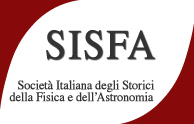Speaker
Description
On 30 June 1861, astronomer Angelo Secchi observed and made in tempera the passage of the Great Comet. He saw the intense light appeared above Rome during the celebrations of patron Saints, from which the drawing Cometa San Pietro took the name.
In his notebooks, he describes its extreme glow, calculates size and position, defining the tail as the longest in history and he traced some graphite drawings. Giovanni Della Longa engraved an etching from these sketches, and they were also preparatory studies for the Secchi’s tempera.
On 12 August, Angelo Secchi illustrated a “Storia delle apparenze della cometa”, in his talk to the Pontificia Accademia Tiberina, published in the pamphlet: Osservazioni e ricerche astronomiche sulla grande cometa del giugno 1861”.
The event was also observed by both Giovanni Plana in Turin and Caterina Scarpellini, who describes the comet in a letter to the Album of Roma Director.
The first sighting of the comet was on 13 May 1861, by an Australian amateur astronomer, John Tebbutt who wrote to the Sydney Observatory about the discovery. The news came later in the Northern Hemisphere and the comet was an unexpected surprise.
Cometa San Pietro, conserved at Inaf-Oar, was in a bad state of conservation and it was restored during a workshop at the University of Turin. It was conducted also a test, supported by diagnostic investigations, to identify a fixative agent useful to protect the pulverulent surface.

